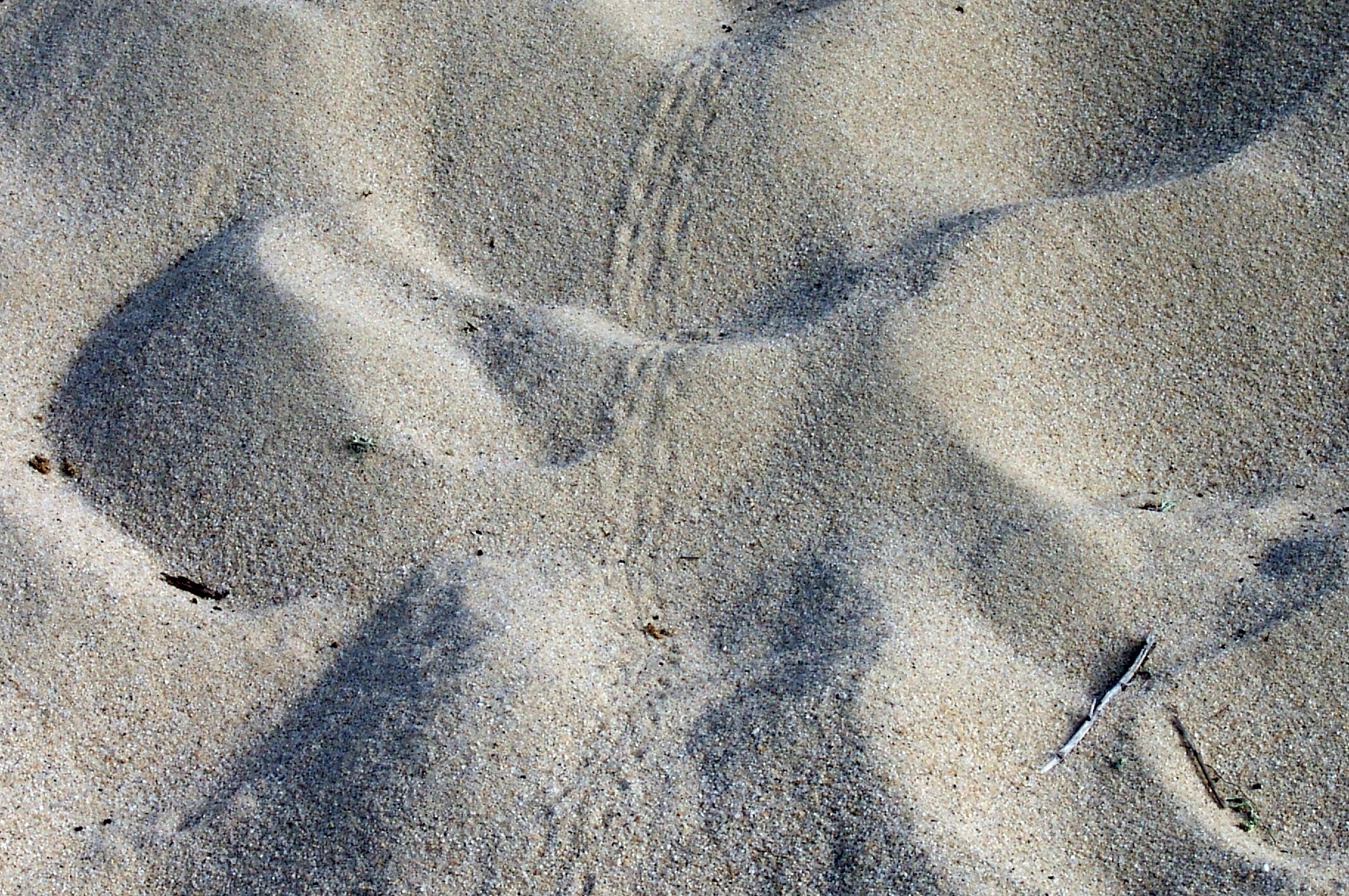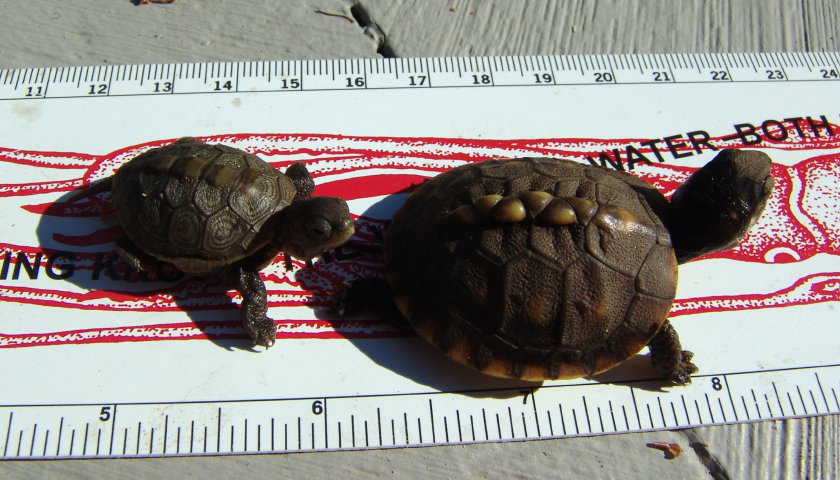Where do hatchlings go once they flee the nest? Using various methods of inference and observation, we have determined that some hatchlings race to the wrack line for safety, others scramble further into the salt marsh grasses and still others opt to remain upland for at least the first winter of their “hidden” years.
Terrapin Hatchling Track Heads Down Turtle Pass Dune
Let’s follow some clues, some tracks and some hatchlings to test these hypotheses. The high dune of Turtle Pass seems the place to start as we discover a hatchling track descending from an emergence nest atop the dune and heading seaward.
Tracks Assume Colorful Tints as Sun Dances Behind Clouds
Down we go along the shifting slope that morphs in shape and color as shadows dance through the contours of the dune.
Close-Up with Tail Mark Bisecting Track
Let’s experience the descent as though we were a newborn hatchling on its first ski run down the slopes.
Follow Tracks to Hatchling Buried in Salt Marsh Wrack
So, our first experiment leads to the discovery of a hatchling burrowed into the landward edge of the wrack line, buried under last winter’s deposit of salt hay.
But our day isn’t over as we encounter another set of hatchlings scaling the bearberry covered banks off 5th Avenue and passing through an exquisite clump of sea lavender en route to safety.
Terrapin Hatchling Scrambles to Reach Salt Marsh
These little critters eschew the wrack line, which to them seems like a clear cut jungle of logs, and head directly into the thick matting of Spartina patens in the salt marsh system separating east and west sections of Lieutenant Island.




